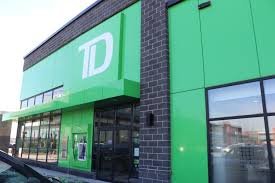
TD Bank Reports Weak Earnings Amid US Losses and Costs
TD Bank, one of Canada’s largest financial institutions, made headlines recently as it reported weaker-than-expected earnings. The results revealed significant challenges primarily stemming from its U.S. operations and soaring insurance expenses. As investors closely scrutinize these developments, it is essential to analyze the reasons behind TD Bank’s performance and its potential implications for its future.
>Best Ai tools for your online business
Overview of TD Bank’s Financial Performance
In its latest earnings report, TD Bank disclosed figures that fell short of market expectations. Despite strong fundamentals in certain areas, the bank’s overall performance was hampered largely due to the following factors:
- U.S. Operations Losses: A disappointing quarter for its U.S. segment significantly impacted overall earnings.
- High Insurance Costs: Increased claims and insurance expenses have put further pressure on profitability.
- Changing Economic Conditions: Fluctuating interest rates and inflationary pressures continue to affect the financial landscape.
These difficulties translate into a notable challenge for TD Bank, affecting not just investors’ sentiments but also the bank’s strategy moving forward.
Understanding the U.S. Operations Losses
TD Bank has been actively expanding its presence in the United States, a strategy that has yielded mixed results. The recent earnings report underscored substantial losses arising from its United States branch operations.
Reasons Behind the Losses
Several factors contributed to the underperformance in the U.S. operations:
- Increasing Competition: The U.S. banking environment is highly competitive, squeezing margins and increasing the difficulty of gaining market share.
- Operational Challenges: Integration issues related to acquisitions may have hindered efficiency and profitability.
- Regulatory Compliance Costs: Compliance with stringent regulations in the U.S. has contributed to heightened operational costs.
The combination of these elements paints a challenging picture for TD Bank as it navigates its U.S. operation strategies.
Escalating Insurance Expenses
Another critical area affecting TD Bank’s earnings is the rising cost of insurance. The bank recorded significant increases in claims and associated expenses, leading to a material adverse effect on profitability.
Factors Contributing to Increased Insurance Costs
The jump in insurance expenses has its roots in various factors:
- Impact of Natural Disasters: An uptick in natural disasters has led to higher claim payouts, adversely affecting the bank’s insurance segment.
- Pandemic-Related Fallout: The continued aftereffects of the COVID-19 pandemic have contributed to rising health-related claims.
- Increased Policyholder Claims: A higher volume of claims from policyholders in difficult economic times can strain resources.
Thus, the bank faces mounting hurdles as it seeks to control costs and contain the impact of these rising insurance premiums.
The Broader Economic Context
The challenges faced by TD Bank are not solely self-inflected but are intertwined with broader economic conditions. The following elements play a significant role in shaping TD Bank’s earnings landscape:
Interest Rate Environment
With central banks globally adjusting interest rates to combat inflation, TD Bank’s performance is inevitably impacted. While higher rates can increase net interest margins, they can also slow lending and consumer spending.
Inflationary Pressures
Persistent inflation can dampen consumer confidence and reduce borrowing, affecting overall banking activity:
- Consumer Spending Reduction: As costs of living rise, households might cut back on spending and borrowing.
- Higher Default Rates: Increased costs can lead to delinquency and defaults, impacting the bank’s credit quality.
Understanding these intertwining economic factors is critical for stakeholders observing TD Bank’s path forward.
Looking Ahead: The Path to Recovery
Despite the recent setbacks, TD Bank has room for strategic adjustments to facilitate recovery and growth:
Strategic Initiatives
Several avenues for improvement could support TD Bank’s stability and performance, including:
- Enhanced Risk Management: Increasing focus on risk assessment in its U.S. operations may yield more sustainable results.
- Cost Containment Strategies: Streamlining operations to reduce costs could mitigate the impact of rising expenses.